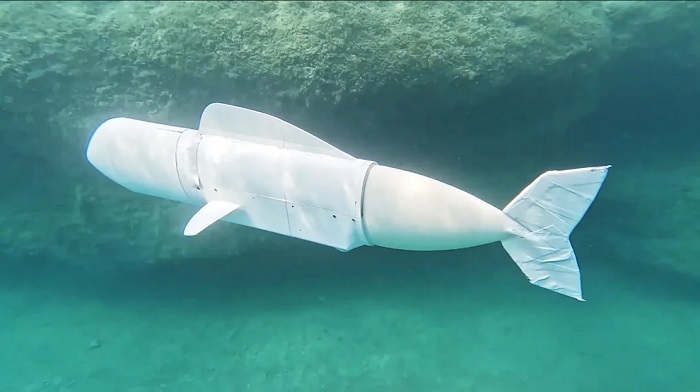Science & Environment
Eve the Robotic Fish: A New Frontier in Understanding Marine Ecosystems

- ETH Zurich students have developed “Eve,” a robotic fish designed to study aquatic ecosystems non-invasively using biomimetic design.
- Eve is equipped with a camera, sonar, and a filter to collect environmental DNA (eDNA) for species identification, offering a detailed understanding of underwater habitats.
- The project aims to create accessible tools for scientists to protect marine life from threats like climate change and overfishing.
Far from the closest coast, in a landlocked region of Switzerland, engineering students at ETH Zurich are expanding the frontiers of marine study. They are creating cutting-edge robots that have the potential to revolutionise ocean research.
One of their inventions is “Eve,” a robotic fish with an internal pump-powered silicone tail that allows it to swim through water with ease. Eve is currently undergoing testing in Lake Zurich as part of a project headed by SURF-eDNA. These students have dedicated the last two years to creating a school of soft robotic fish, of which Eve is the newest member.
“By making Eve look like a fish, we are able to be minimally invasive into the ecosystem that we’re surveying,” explained Dennis Baumann, a master’s student involved in the project, during an interview with CNN.
Eve’s biomimetic design lets her fit in perfectly with her surroundings by preventing other aquatic species from getting disturbed.
However, Eve’s remarkable abilities are not limited to its capacity to blend in. This autonomous underwater vehicle (AUV) also has a camera to record footage underwater and sonar technology, which works well with an algorithm to let it easily manoeuvre around obstacles.
The capacity of Eve’s design to gather DNA (eDNA) from the environment while swimming is another essential feature. With the help of this capability, the AUV may collect DNA fragments that aquatic organisms have shed, which can subsequently be examined in a lab to determine the species that are present in that body of water. “All of the animals that are in the environment, they shed their DNA, so there’s DNA floating around that we can find,” Martina Lüthi, a postdoctoral researcher at ETH Zurich, told CNN.
The ultimate objective of Eve is to give scientists a more thorough and precise knowledge of the oceans and their inhabitants. Even though the oceans encompass more than 70% of our world, there are still many unanswered questions about what is below the surface.
AUVs and remotely operated vehicles are becoming more and more crucial tools for investigating these underwater environments. Clownfish-shaped drones have been developed by companies like the California-based business Aquaai to monitor the pH, salinity, and oxygen levels in waterways. A rover only last year, at a depth of 8,300 meters (27,350 ft), recorded the deepest fish ever seen on camera.
Even while eDNA is gaining popularity as a tool for biodiversity monitoring, the sample methods used today are sometimes simplistic – even now, some scientists still use a boat’s side to scoop water into a cup. In order to safeguard Earth’s seas, a more thorough understanding of marine habitats may be provided by sophisticated instruments like Eve. Overfishing, other human activity, and climate change are posing an increasing threat to these environments.
“We want to build a reliable tool for biologists,” Baumann said, expressing hope that one day their technology could be scaled up to be accessible to any scientist who needs it. “Maybe we can prevent species from being endangered or dying out.”
The students at ETH Zurich are putting themselves at the forefront of marine science, providing fresh perspectives on how to investigate and safeguard our waters as Eve continues to develop.
Source: CNN






















































